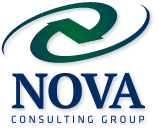Buyer Evolution Framework Model©
Navigating the Five Stages of Decision-Making and Adaptation in the Business-to-Business Landscape
The Buyer Evolution Framework Model© is a groundbreaking approach designed to help businesses understand and support the complex decision-making process that B2B buyers undergo when adapting to new products, services, or solutions. This comprehensive model breaks down the journey into five distinct stages, offering valuable insights into buyers’ mindsets and needs at each phase.
Key Features of the Buyer Evolution Framework Model©
Status Quo Stage: At the onset, B2B buyers may not realize the need for change or may lack the drive to explore innovative suppliers and solutions. However, with the right guidance, they can unlock new opportunities and achieve greater success in their endeavors.
Consideration Stage: As B2B buyers gain a deeper understanding of the importance of change, they embark on a journey toward the Consideration Stage. Here, they explore the endless possibilities of modifying their purchasing behavior, carefully weigh the risks and rewards, and envision a future where they have embraced new strategies or suppliers. Through this process, they emerge as confident and empowered decision-makers ready to take on the challenges of the ever-evolving business landscape.
Anticipation Stage: After gaining a clear understanding of the desired outcome, B2B buyers enter the Anticipation Stage, where they establish achievable goals, create actionable strategies, and identify potential obstacles in changing their purchasing behavior.
Action Stage: During the action stage, B2B buyers take charge and implement their purchasing change plan, utilizing their carefully crafted strategies and techniques.
Maintenance Stage: In the final stage, B2B buyers are empowered to maintain their new purchasing behaviors, resist the temptation to fall back into old habits, and solidify the positive changes they have made.
The Buyer Evolution Framework Model© empowers sales professionals to understand and guide the decision-making process in the business-to-business environment by recognizing and addressing the unique needs and challenges faced by buyers at each stage. This approach enables stronger relationships, drives customer satisfaction, and achieves sustainable growth and success.

